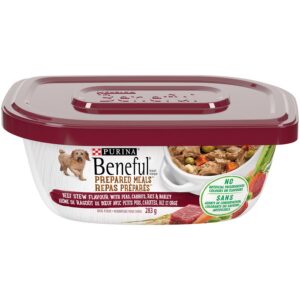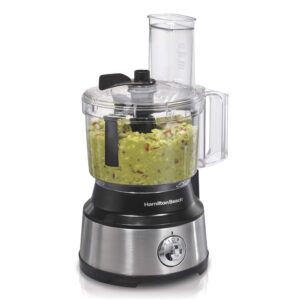The Capital Area Food Bank is a non-profit organization located in Washington, DC that provides food and other related services to those in need. It was founded in 1980 and serves the District of Columbia, Montgomery County in Maryland, Prince George’s County in Maryland, Northern Virginia, and parts of West Virginia. The mission of the Capital Area Food Bank is to provide nourishing food resources for individuals facing hunger by providing access to nutritious meals while engaging our community to eliminate hunger.
They distribute food through over 400 partner agencies such as soup kitchens, emergency pantries, homeless shelters and senior centers as well as through their own direct programs.
The Capital Area Food Bank is a D.C.-based non-profit organization that has been working for nearly four decades to alleviate hunger in the greater Washington, D.C. area. This food bank provides nutritious meals to more than 500,000 individuals each year through its network of over 450 partner organizations including soup kitchens, homeless shelters and community centers across eight Maryland counties and the District of Columbia.
How Can I Get Free Food in Austin?
Living in Austin, Texas is great – but it can often be expensive! Fortunately, there are many ways to get free food in the city. One of the best ways to do this is by taking advantage of local events and community organizations that host meals for those in need.
For example, a number of churches throughout Austin offer weekly soup kitchens or hot meal services for anyone who needs it. Additionally, there are several organizations such as Mobile Loaves & Fishes and Caritas which provide free meals each week at designated locations around town. These meals are open to all members of the public regardless of their income level or background.
Furthermore, certain farmers markets throughout Austin will hold special “free produce days” where they give away fresh fruits and vegetables at no cost every so often. Last but not least, some grocery stores have set up donation bins where customers can drop off unused food items which then get redistributed among people experiencing hunger in the area. There’s also an app called Copia Food Rescue which works with restaurants and supermarkets to share excess food with people living in poverty or facing other hardships right here in Austin – all you need to do is download it on your phone!
So if you’re looking for a way to eat without breaking your budget while still helping out those less fortunate than yourself, look into these options for getting free food right here in Austin!
Where Can I Get Free Food?
If you are looking for free food, there are a few places that you can try. Food banks and soup kitchens have become more popular in recent years as an answer to hunger issues nationwide. You can find these in most communities by doing a simple online search or contacting your local government offices.
Additionally many churches offer meals on certain days of the week or even everyday depending on the church’s resources. There may also be other organizations such as homeless shelters that provide meals for those who need them. Finally, if all else fails, don’t forget about grocery stores which commonly have day-old pastries and bread available for free at the end of each day.
With some research and perseverance you should be able to get access to some free food options near you!
How to Get Free Food in Houston?
Houston is a great city for those who are looking to save money on food. There are many ways to get free food in Houston, from utilizing discount programs and coupons to visiting local restaurants during special promotions or participating in community events. One of the best and most popular methods for getting free food in Houston is through the use of discount cards, such as Restaurant.com or Groupon.
These cards can be used at select restaurants across town that offer discounts when you mention your card before ordering. Additionally, there are several other restaurant specials and offers available throughout the city that may not require any sort of card; these can range from a percentage off your order to buy one get one free deals! Another way people living in Houston can access free food is by taking advantage of local charity drives and donation centers which provide meals to those less fortunate in their community.
Finally, it’s always possible to frequent farmers markets or join a CSA (community supported agriculture) program where you’ll receive fresh produce grown locally at no cost – these will help keep grocery costs low while also giving back to the local farming economy! With so many options available for accessing free food in Houston, there’s no need worry about going hungry anytime soon!
What is Capital Area Food Bank Most Needed Items?
The Capital Area Food Bank is always in need of donations, and there are some items that are especially needed. Non-perishable food such as canned tuna, peanut butter, pasta sauce, cereal and canned fruits and vegetables are the most requested items. In addition to these staples we also need other healthy snacks like nuts, raisins or granola bars.
Toiletries such as shampoo, soap and toothpaste are also much needed items. Finally monetary donations make a huge difference in helping us purchase fresh produce for our clients who have limited access to grocery stores with healthier options. Your donation–no matter how small–makes a big impact on those struggling with hunger here in the Capital area!

Credit: servedc.galaxydigital.com
Central Texas Food Bank Schedule
The Central Texas Food Bank is open Monday-Friday from 9am to 5pm and on Saturday’s they are available 10am-2pm. They provide an array of resources, such as food pantries, mobile pantries, nutrition education classes, cooking demonstrations and more. In addition to providing access to healthy foods for individuals and families in need throughout Central Texas, the Food Bank also focuses on educating its community about proper nutrition and healthy eating habits.
Austin Food Bank
The Austin Food Bank is a non-profit organization dedicated to providing food and other assistance to individuals and families in need throughout the greater Austin, Texas area. The organization provides services such as grocery distribution, meal preparation and delivery, nutrition education, and financial aid. The Austin Food Bank has been helping people in the community since 1981 by delivering over 24 million meals per year through its network of 400 partner agencies across Travis County.
Additionally, they provide more than 40 direct service programs for those affected by poverty or crisis situations.
Central Texas Food Bank
The Central Texas Food Bank is a local non-profit organization that works to end hunger in Central Texans by providing food and grocery products to people facing hunger. Every year, the Food Bank distributes more than 46 million meals across 21 counties through 250 partner agencies such as pantries, soup kitchens, shelters, mobile pantries and other programs. The organization also provides nutrition education and advocacy services for those struggling with food insecurity.
Conclusion
This blog post has highlighted the important work of the Capital Area Food Bank in providing food to those who are less fortunate. The organization is dedicated to fighting hunger and ensuring that everyone in the area has access to nutritious meals. It is clear from this post that the Capital Area Food Bank is making a positive difference in people’s lives by providing much needed resources for families struggling with food insecurity.
With its commitment to helping those in need, it is an admirable example of how organizations can make a substantial impact on their communities.








